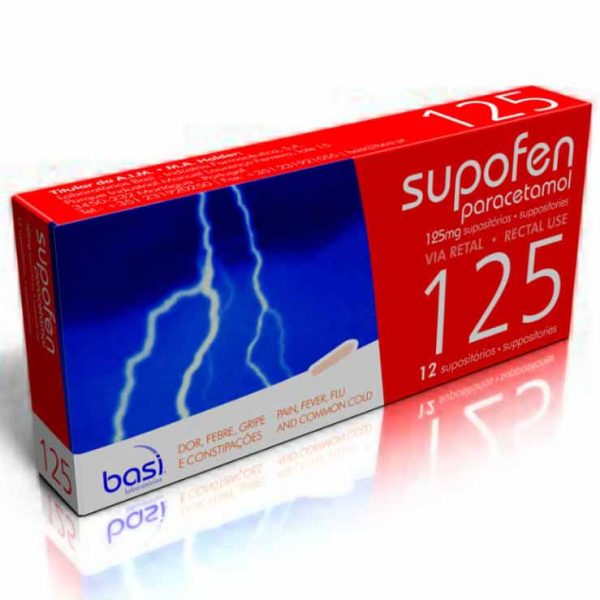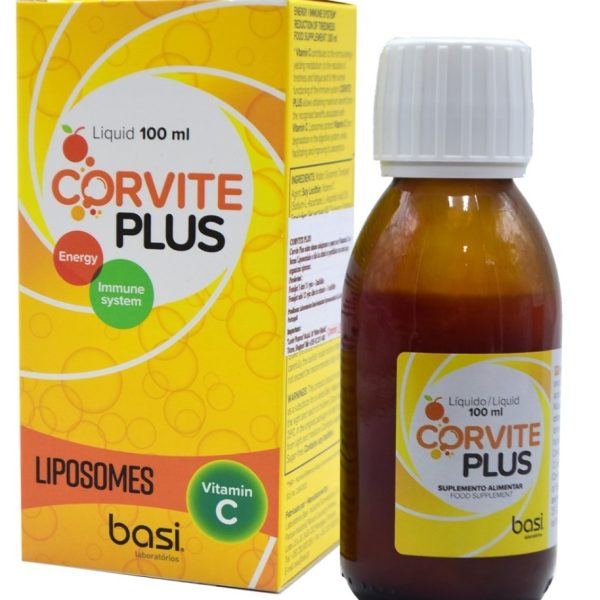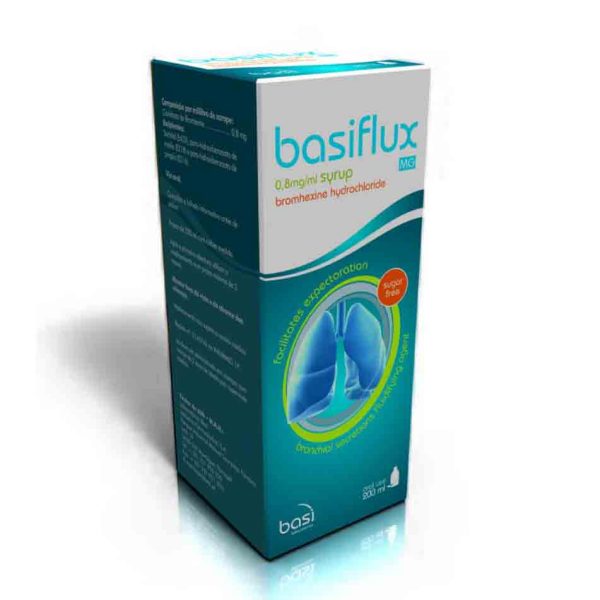Description
Intravenous Azithromycin 500mg Injection
Generic Name: azithromycin monohydrate
Dosage Form: injection, powder, lyophilized, for solution
Indications and Usage for Azithromycin Injection
Azithromycin for injection is a macrolide antibacterial drug indicated for the treatment of patients with infections caused by susceptible strains of the designated microorganisms in the conditions listed below.
Community-Acquired Pneumonia
Due to Chlamydophila pneumoniae, Haemophilus influenzae,
Legionella pneumophila, Moraxella catarrhalis, Mycoplasma pneumoniae, Staphylococcus aureus, or Streptococcus pneumoniae in patients who require initial intravenous therapy.
Pelvic Inflammatory Disease
Due to Chlamydia trachomatis, Neisseria gonorrhoeae, or Mycoplasma hominis in patients who require initial intravenous therapy. If anaerobic microorganisms are suspected of contributing to the infection, an antimicrobial agent with anaerobic activity should be administered in combination with azithromycin for injection.
Azithromycin for injection should be followed by azithromycin by the oral route as required.
Usage
To reduce the development of drug-resistant bacteria and maintain the effectiveness of azithromycin for injection and other antibacterial drugs, azithromycin for injection should be used only to treat infections that are proven or strongly suspected to be caused by susceptible bacteria. When culture and susceptibility information are available, they should be considered in selecting or modifying antibacterial therapy. In the absence of such data, local epidemiology and susceptibility patterns may contribute to the empiric selection of therapy.
Azithromycin Injection Dosage and Administration , Indications and Usage:
Community-Acquired Pneumonia
The recommended dose of azithromycin for injection for the treatment of adult patients with community-acquired pneumonia due to the indicated organisms is 500 mg as a single daily dose by the intravenous route for at least two days. Intravenous therapy should be followed by azithromycin by the oral route at a single, daily dose of 500 mg, administered as two 250 mg tablets to complete a 7- to 10-day course of therapy. The timing of the switch to oral therapy should be done at the discretion of the physician and in accordance with clinical response.
Pelvic Inflammatory Disease
The recommended dose of azithromycin for injection for the treatment of adult patients with pelvic inflammatory disease due to the indicated organisms is 500 mg as a single daily dose by the intravenous route for one or two days. Intravenous therapy should be followed by azithromycin by the oral route at a single, daily dose of 250 mg to complete a 7-day course of therapy. The timing of the switch to oral therapy should be done at the discretion of the physician and in accordance with clinical response.
Preparation of the Solution for Intravenous Administration
The infusate concentration and rate of infusion for azithromycin for injection should be either 1 mg/mL over 3 hr or 2 mg/mL over 1 hr. Azithromycin for injection should not be given as a bolus or as an intramuscular injection.
Reconstitution
Prepare the initial solution of Azithromycin for Injection by adding 4.8 mL of Sterile Water for Injection to the 500 mg vial, and shaking the vial until all of the drug is dissolved. Since azithromycin for injection is supplied under vacuum, it is recommended that a standard 5 mL (non-automated) syringe be used to ensure that the exact amount of 4.8 mL of Sterile Water is dispensed. Each mL of reconstituted solution contains 100 mg azithromycin. Reconstituted solution is stable for 24 hr when stored below 30°C (86°F).
Parenteral drug products should be inspected visually for particulate matter prior to administration. If particulate matter is evident in reconstituted fluids, the drug solution should be discarded.
Dilute this solution further prior to administration as instructed below.
Dilution to provide azithromycin over a concentration range of 1 mg/mL to 2 mg/mL, transfer 5 mL of the 100 mg/mL azithromycin solution into the appropriate amount of any of the diluents listed below:
Normal Saline (0.9% sodium chloride)
1/2 Normal Saline (0.45% sodium chloride)
5% Dextrose in Water
Lactated Ringer’s Solution
5% Dextrose in 1/2 Normal Saline (0.45% sodium chloride) with 20 mEq KCl
5% Dextrose in Lactated Ringer’s Solution
5% Dextrose in 1/3 Normal Saline (0.3% sodium chloride)
5% Dextrose in 1/2 Normal Saline (0.45% sodium chloride)
Normosol®-M in 5% Dextrose
Normosol®-R in 5% Dextrose
Final Infusion Solution Concentration (mg/mL)
Amount of Diluent (mL) 1 mg/mL for 500 mL and 2 mg/mL for 250 mL
Other intravenous substances, additives, or medications should not be added to azithromycin for injection, or infused simultaneously through the same intravenous line.
Contraindications and Hypersensitivity.
Azithromycin is contraindicated in patients with known hypersensitivity to azithromycin, erythromycin, any macrolide or ketolide drugs.
Hepatic Dysfunction.
Azithromycin is contraindicated in patients with a history of cholestatic jaundice/hepatic dysfunction associated with prior use of azithromycin.
Warnings Precautions and Hypersensitivity.
Serious allergic reactions, including angioedema, anaphylaxis, and dermatologic reactions including Acute Generalized Exanthematous Pustulosis (AGEP), Stevens-Johnson Syndrome, and toxic epidermal necrolysis have been reported in patients on azithromycin therapy.
Fatalities have been reported. Cases of Drug Reaction with Eosinophilia and Systemic Symptoms (DRESS) have also been reported. Despite initially successful symptomatic treatment of the allergic symptoms, when symptomatic therapy was discontinued, the allergic symptoms recurred soon thereafter in some patients without further azithromycin exposure. These patients required prolonged periods of observation and symptomatic treatment. The relationship of these episodes to the long tissue half-life of azithromycin and subsequent prolonged exposure to antigen is unknown at present.
If an allergic reaction occurs, the drug should be discontinued and appropriate therapy should be instituted. Physicians should be aware that the allergic symptoms may reappear after symptomatic therapy has been discontinued.
Hepatotoxicity
Abnormal liver function, hepatitis, cholestatic jaundice, hepatic necrosis, and hepatic failure have been reported, some of which have resulted in death. Discontinue azithromycin immediately if signs and symptoms of hepatitis occur.
Infantile Hypertrophic Pyloric Stenosis (IHPS)
Following the use of azithromycin in neonates (treatment up to 42 days of life), IHPS has been reported. Direct parents and caregivers to contact their physician if vomiting or irritability with feeding occurs.
Q-T Prolongation
Prolonged cardiac repolarization and QT interval, imparting a risk of developing cardiac arrhythmia and torsades de pointes, have been seen with treatment with macrolides, including azithromycin. Cases of torsades de pointes have been spontaneously reported during postmarketing surveillance in patients receiving azithromycin. Providers should consider the risk of QT prolongation, which can be fatal when weighing the risks and benefits of azithromycin for at-risk groups including:
patients with known prolongation of the QT interval, a history of torsades de pointes, congenital long QT syndrome, bradyarrhythmias or uncompensated heart failure patients on drugs known to prolong the QT interval
patients with ongoing proarrhythmic conditions such as uncorrected hypokalemia or hypomagnesemia, clinically significant bradycardia, and in patients receiving Class IA (quinidine, procainamide) or Class III (dofetilide, amiodarone, sotalol) antiarrhythmic agents.
Elderly patients may be more susceptible to drug-associated effects on the QT interval.
Clostridium difficile-Associated Diarrhea
Clostridium difficile associated diarrhea (CDAD) has been reported with use of nearly all antibacterial agents, including azithromycin for injection, and may range in severity from mild diarrhea to fatal colitis. Treatment with antibacterial agents alters the normal flora of the colon leading to overgrowth of C. difficile.
C. difficile produces toxins A and B which contribute to the development of CDAD. Hypertoxin producing strains of C. difficile cause increased morbidity and mortality, as these infections can be refractory to antibacterial therapy and may require colectomy. CDAD must be considered in all patients who present with diarrhea following antibacterial use. Careful medical history is necessary since CDAD has been reported to occur over two months after the administration of antibacterial agents.
If CDAD is suspected or confirmed, ongoing antibacterial use not directed against C. difficile may need to be discontinued.
Appropriate fluid and electrolyte management, protein supplementation, antibacterial treatment of C. difficile, and surgical evaluation should be instituted as clinically indicated.
Exacerbation of Myasthenia Gravis
Exacerbations of symptoms of myasthenia gravis and new onset of myasthenic syndrome have been reported in patients receiving azithromycin therapy.
Why is Bromhexine Prescribed? (Indications)
Bromhexine is prescribed to loosen or thin down the mucus secretions that can plug the airways. The medication promotes the expulsion of the bronchial secretions by making it easier to clear the phlegm from the respiratory tract.
It is recommended only for patients with a productive cough.
Bromhexine is generally used in conjunction with the antibiotic therapy for treating cough associated with
bronchitis , COPD or cystic fibrosis .
When should Bromhexine not to be taken? (Contraindications)
Bromhexine should not be taken in the following conditions :
• Peptic ulcer
• Severe hepatic impairment
• Severe renal impairment
What is the dosage of Bromhexine?(Posology)
• The recommended dose range of Bromhexine for adults is 8mg to be taken three times daily.
• The maximum adult dose is 16mg three times daily.
• Children from 2 years to 10 years of age should take 4mg thrice a day.
How should Bromhexine be taken?
• Bromhexine comes in the form of tablet or syrup and is to be taken orally with food.
Etofenamate Gel
A topical NSAID (Non-Steroidal Anti-inflammatory) Gel used for the treatment of rheumatic conditions to reduce pain and swelling. Etofenamate is used for Osteoarthritis and sports injuries.
Recommended dosage:
Adults (including the elderly):
Etoflam 5% w/w gel is applied topically. A 5-10cm strip of gel (according to the area affected) should be rubbed in gently. This may be repeated up to 4 times daily.
Clinical studies in patients with impaired renal function or undergoing anti-coagulant therapy have not indicated a need to change the recommended dosage in these patients.
Children and infants:
The use of Etofenamate 5% w/w gel is not recommended in children or infants.
It is recommended that treatment should be reviewed after 14 days. Treatment should not extend beyond 6 weeks. In symptomatic treatment of osteoarthritis, therapy should be reviewed after 4 weeks.
Contraindications
Etoflam 5% w/w gel contains alcohol and should not be applied to broken skin.
Use with occlusive dressings.
Use in patients hypersensitive to any of the ingredients or to non-steroidal anti-inflammatory agents including aspirin.
Use simultaneously to the same site with any other topical preparation. Use in the presence of local infection.
Special warnings and precautions for use
Etofenamate 5% w/w gel contains alcohol and therefore contact with the eyes or the mucous membranes should be avoided.
Hands should be thoroughly washed after use of this product.
This product should not be applied to irritated or broken skin. If skin irritation develops, use of the product should be discontinued.
If there is no improvement or the condition is aggravated, the doctor should be consulted.
Interaction with other medicinal products and other forms of interaction: None known.
Fertility, pregnancy and lactation
Special Groups
Etoflam 5% w/w gel is not recommended for use during pregnancy and lactation.
These concentrations have no practical meaning, since they are orders of magnitude below the therapeutic dose.
No teratogenic effects have been found in laboratory studies but the safety of etofenamate absorbed from Etoflam 5% w/w gel to the foetus, if used during pregnancy, or to the suckling infant if used during lactation, has not been established.
Effects on ability to drive and use machines
Not applicable.
Undesirable effects
The following undesirable effects have been reported through post-marketing use.
Undesirable effects listed in the table are grouped by MedDRA System Organ Classes and are ranked under heading of frequency, using the following convention, when applicable: very common ( 1/10); common ( 1/100 to
Rare
Contact dermatitis
Overdose
In view of the topical route of administration overdosage is not considered a practical possibility.
Pharmacodynamic properties
Pharmacotherapeutic group: Anti-inflammatory/analgesic for the treatment of inflammatory musculoskeletal system disorder.
Mechanism of action: Interactions with the arachidonic acid cascade (inhibition of prostaglandin synthesis) is postulated as the main action mechanism of nonsteroidal anti-inflammatories.
Supofen 125mg/250mg/500mg
WHAT PARACETAMOL SUPPOSITORIES ARE AND WHAT THEY ARE USED FOR.?
Paracetamol Suppositories contain a medicine called paracetamol. This belongs to a group of medicines called pain-killers (analgesics). A suppository is a small, torpedo-shaped, medicine which is inserted into the back passage (rectum).
Paracetamol Suppositories are used to treat pain and high temperature (fever) in children from 6 to 12 years of age.
They can be used in children who find it difficult to take paracetamol as tablets or syrup.
You must talk to a doctor if the patient does not feel better or if the patient feels worse after 3 days.
2. WHAT YOU NEED TO KNOW BEFORE YOU USE PARACETAMOL SUPPOSITORIES
Do not give Paracetamol Suppositories to the patient:
if the patient is allergic to paracetamol, soya, peanuts or any of the other ingredients of this medicine (listed in Section 6).
Warnings and precautions
Talk to a doctor or pharmacist before using Paracetamol Suppositories.
Take special care with the use of Paracetamol Suppositories and talk to your pharmacist or doctor if:
the patient has problems with their liver or kidneys.
Other medicines and Paracetamol Suppositories
Tell the patient’s doctor or pharmacist if the patient is taking, has recently taken or might take any other medicines. This is because Paracetamol Suppositories can have an affect on the way some medicines work and some medicines can have an affect on how Paracetamol Suppositories work.
In particular tell the patient’s doctor or pharmacist if the patient is taking any of the following:
Other medicines containing paracetamol – do not give the patient Paracetamol Suppositories at the same time
Medicines to treat nausea (feeling sick) and vomiting (being sick), such as metoclopramide and domperidone
Colestyramine, used to reduce the level of cholesterol (fat) in the blood
Medicines called anticoagulants, such as warfarin, used for treating blood clots or “thinning the blood”
Medicines called anticonvulsants used for treating epilepsy or fits (e.g. phenytoin, carbamazepine)
The antibiotic rifampicin.
3. HOW TO USE PARACETAMOL SUPPOSITORIES
This medicine is for rectal use only. Always use this medicine exactly as described in this leaflet or as the patient’s doctor or pharmacist have told you. Check with the patient’s doctor or pharmacist if you are not sure.
The recommended dose is:
Age: 6 years to 9 years (body weight 20-30kg); number of suppositories: 1; minimum length of time between doses: 4 – 6 hours; maximum number of suppositories in 24 hours: 4
Age: 10 years to 12 years (body weight 30-40kg); number of suppositories: 1 or 2; minimum length of time between doses: 4 – 6 hours; maximum number of suppositories in 24 hours: 8
Do not give the patient more suppositories than stated above.
How to use the suppositories:
The patient’s bowels need to be empty when you give them this medicine. If the patient needs to go to the toilet, make sure that they do it before you give them the suppository.
It may be easier to give the patient the suppository if they are lying on their front or side on a bed.
Wash your hands. Then peel the wrapping apart to take out the suppository. Do not break the suppository before use.
Gently push the suppository into the patient’s back passage with the pointed end first. To make it easier to give the suppository you may warm it slightly between your hands beforehand.
Try to keep the patient still for a minute or two and then wash your hands.
If you need to give another suppository, then follow the above procedure again.
If you have given more Paracetamol Suppositories to the patient than you should:
Talk to a doctor at once if your child takes too much
4. POSSIBLE SIDE EFFECTS
Like all medicines, this medicine can cause side effects, although not everybody gets them.
Stop giving Paracetamol Suppositories to the patient immediately and call your doctor if you notice the patient has any signs of allergic reaction.
Signs of an allergic reaction include a rash, swallowing or breathing problems, swelling of your lips, face, throat or tongue.
The following side effects can happen with this medicine.
Common side effects (affects more than 1 in 100 people taking this medicine):
Redness or soreness in and around the back passage.
Rare side effects (affects less than 1 in 1000 people taking this medicine):
Blood problems. If these happen, the patient may bruise or bleed more easily than usual, be more susceptible to infections, or get a high temperature (fever) and ulcers in the mouth and throat
Liver problems. Symptoms may include jaundice (yellowing of the skin or whites of the eyes).
Reporting of side effects
If the patient gets any side effects, talk to a doctor or pharmacist.
5. HOW TO STORE PARACETAMOL SUPPOSITORIES
Keep this medicine out of the sight and reach of children.
Do not use this medicine after the expiry date which is stated on the carton and on the blister strip. The expiry date refers to the last day of that month. Do not store over 30°C.
Do not throw away any medicines via wastewater or household waste. Ask your pharmacist how to throw away medicines you no longer use. These measures will help protect the environment.
6. CONTENTS OF THE PACK AND OTHER INFORMATION
What Supofen Suppositories contain:
The active substance is paracetamol. Each suppository contains 125mg/250mg/500mg of paracetamol.
The other ingredients are hydrogenated fat and soyabean lecithin.
What Paracetamol Suppositories look like and contents of the pack:
Cream coloured, torpedo shaped suppository, available in packs of 10 suppositories.






